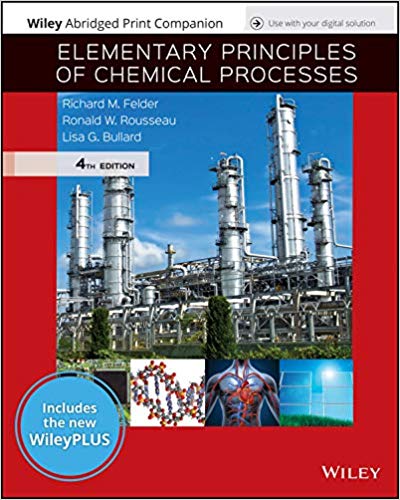When a flammable liquid (e.g., gasoline) ignites, the substance actually burning is vapor generated from the liquid.
Question:
When a flammable liquid (e.g., gasoline) ignites, the substance actually burning is vapor generated from the liquid. If the concentration of the vapor in the air above the liquid exceeds a certain level (the lower flammability limit), the vapor will ignite if it is exposed to a spark or another ignition source. Once ignited, the heat released is likely to cause additional vaporization of the liquid, and the resulting fire may continue until all combustible material has been consumed.
(a) The flash point is defined as the minimum temperature at which a flammable liquid or volatile solid gives off sufficient vapor to form an ignitable mixture with air near the surface of the liquid or within a vessel (page 2-515, Perry’s Chemical Engineers’ Handbook, see Footnote 1). For example, the flash point of n-octane at 1.0 atm is 13°C (55°F), which means that dropping a match into an open container of octane is likely to start a fire in a laboratory, but not outside on a cold winter day. (Do not try it! One reference—L. Bretherick, Bretherick’s Handbook of Reactive Chemical Hazards, 4th Edition, Butterworths, London, 1990, p. 1596—points out there is “usually a fair [our emphasis] correlation between flash point and probability of involvement in fire.”) Suppose you are keeping two solvents in your laboratory, one with a flash point of 15°C and the other with a flash point of 75°C. How do these solvents differ from the standpoint of safety? What differences, if any, should there be in how you treat them?
(b) The lower flammability limit (LFL) of methanol in air is 6.0 mole%. Calculate the temperature at which a saturated methanol–air mixture at 1 atm would have a composition corresponding to the LFL. What is the relationship of this value to the flash point, and what value would you assign the flash point of methanol?
(c) Give reasons why it would be unsafe to maintain an open container of methanol in an environment below the LFL (i.e., the value calculated in Part (b)) if there are ignition sources nearby. List common ignition sources that may be found in a laboratory.
Step by Step Answer:

Elementary Principles of Chemical Processes
ISBN: 978-1119498759
4th edition
Authors: Richard M. Felder, Ronald W. Rousseau, Lisa G. Bullard





